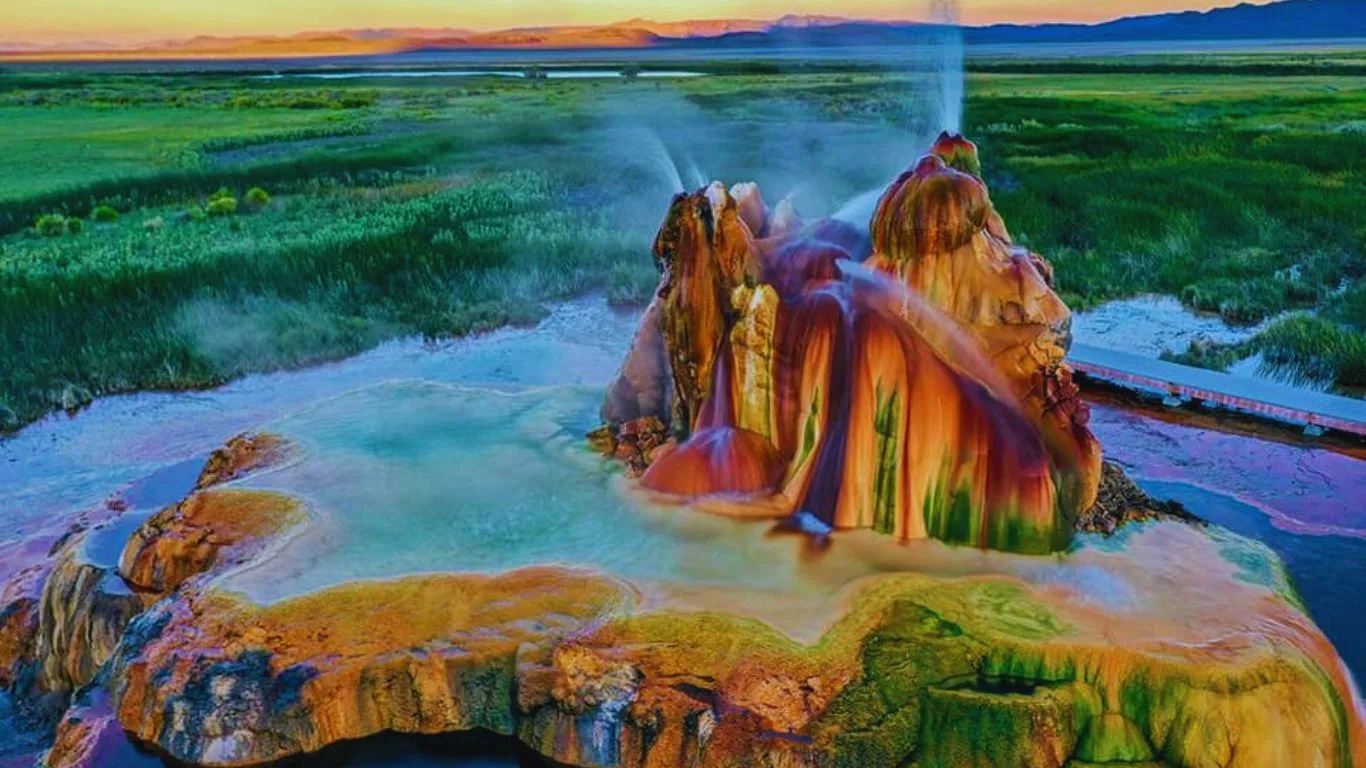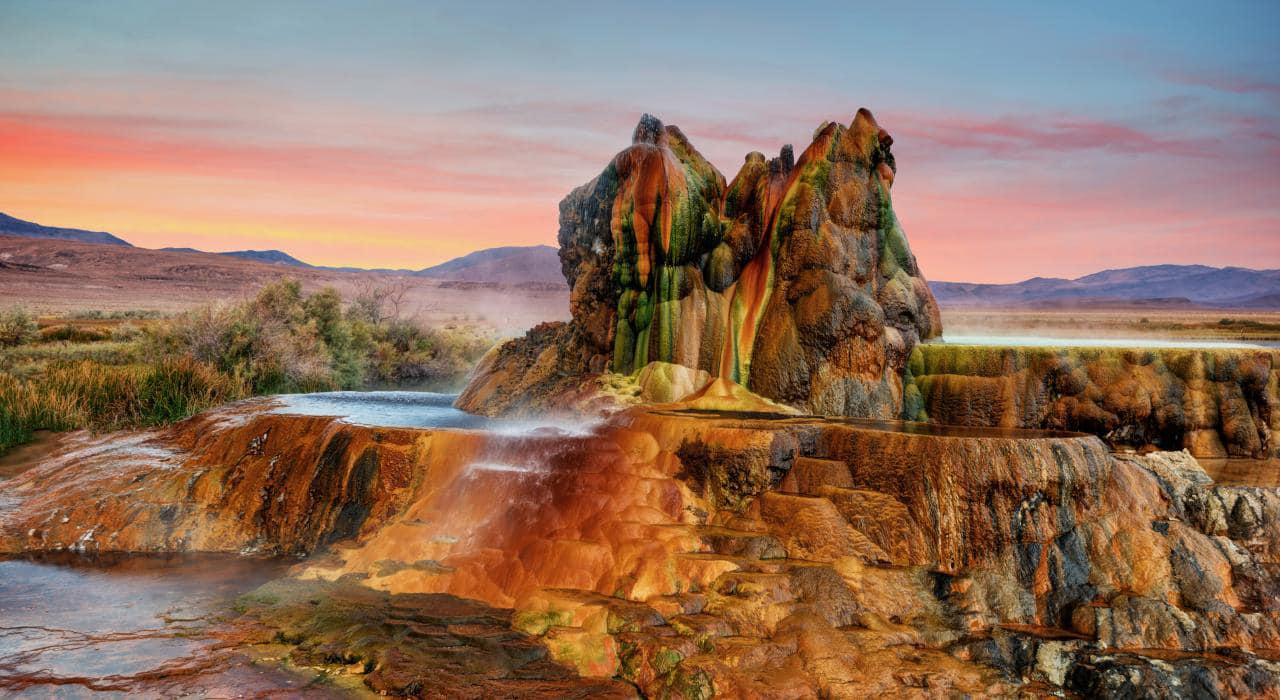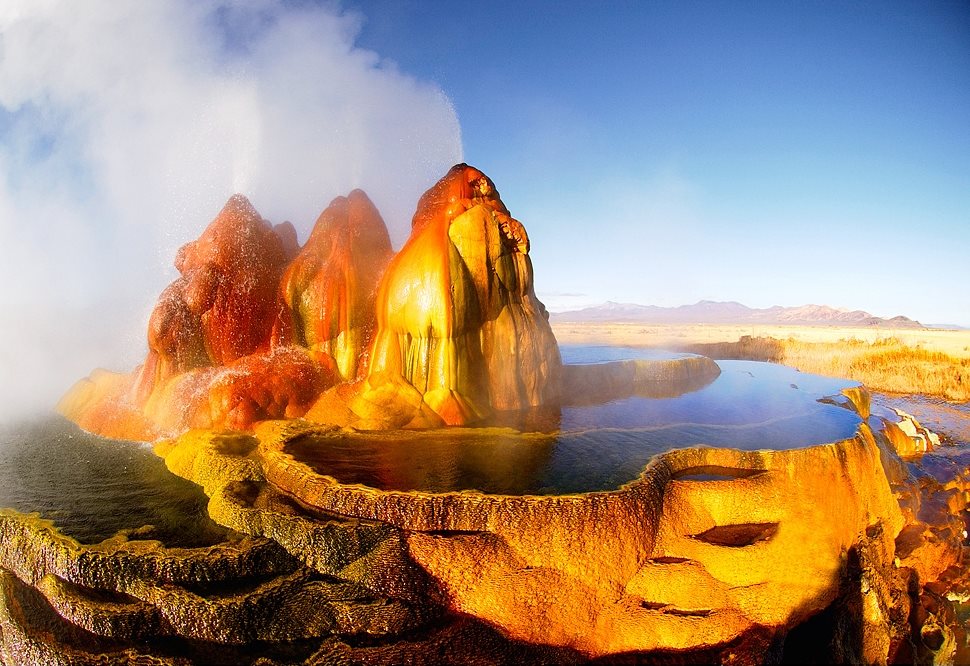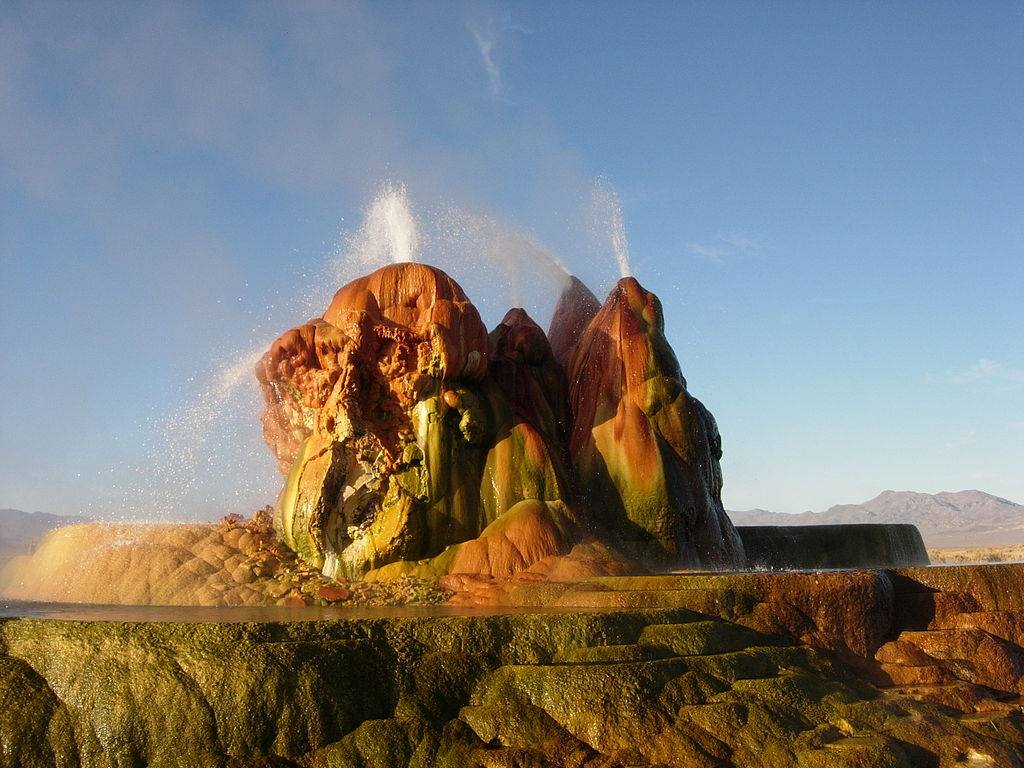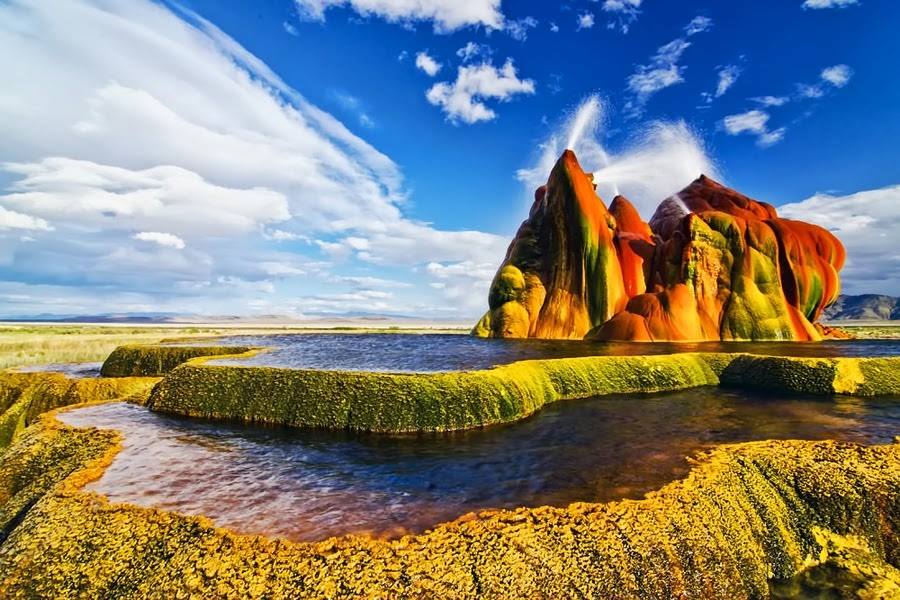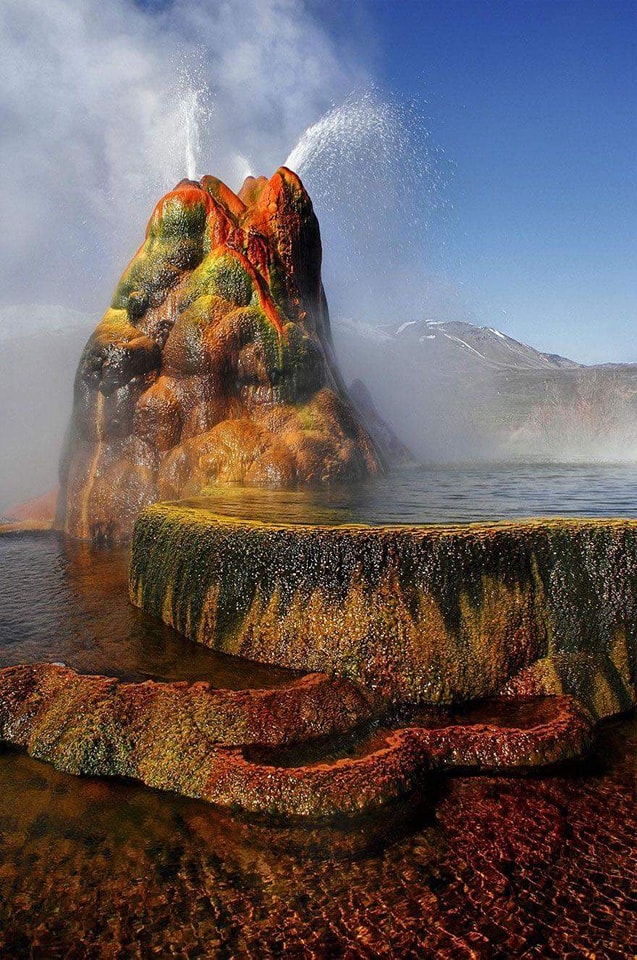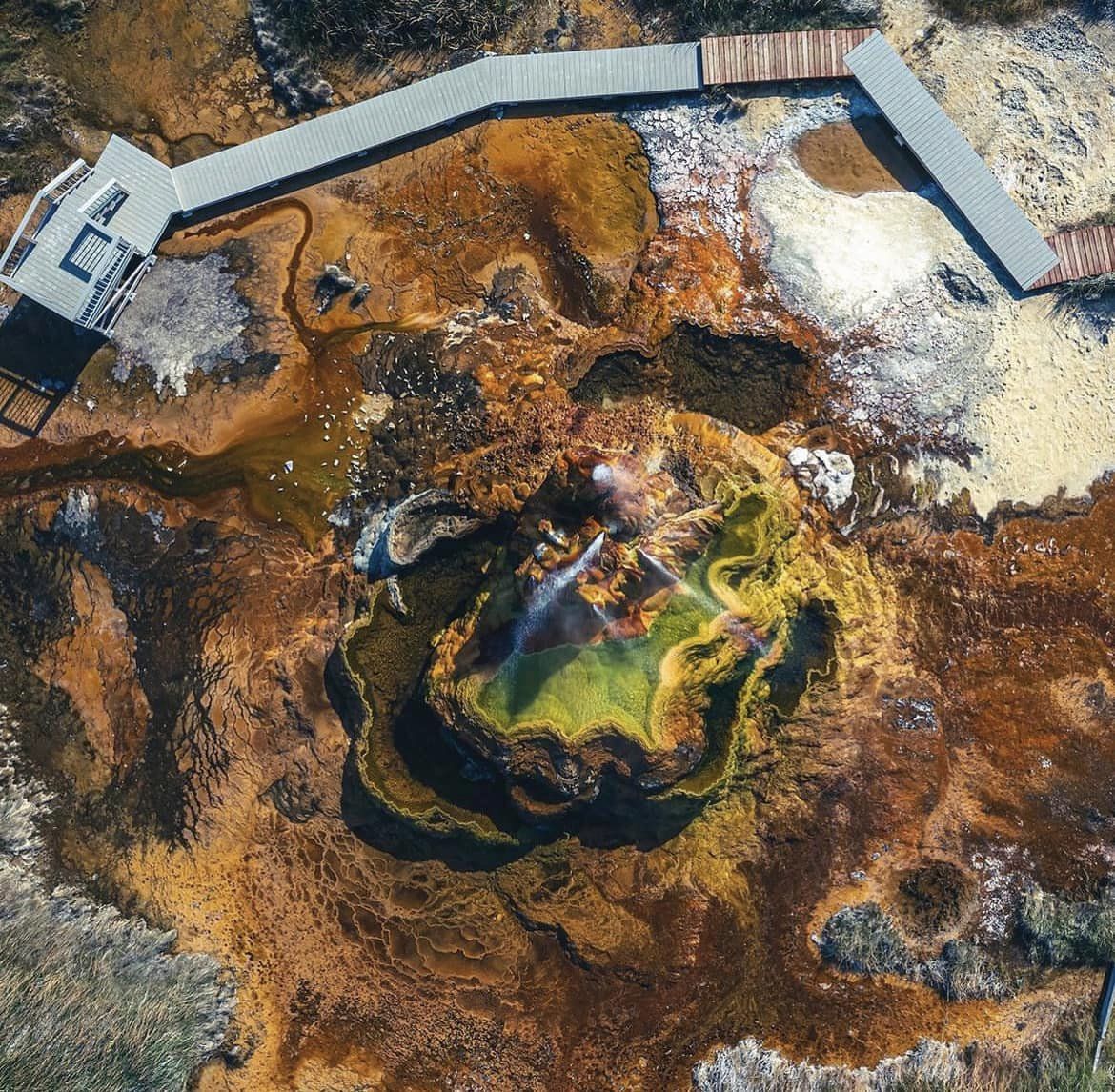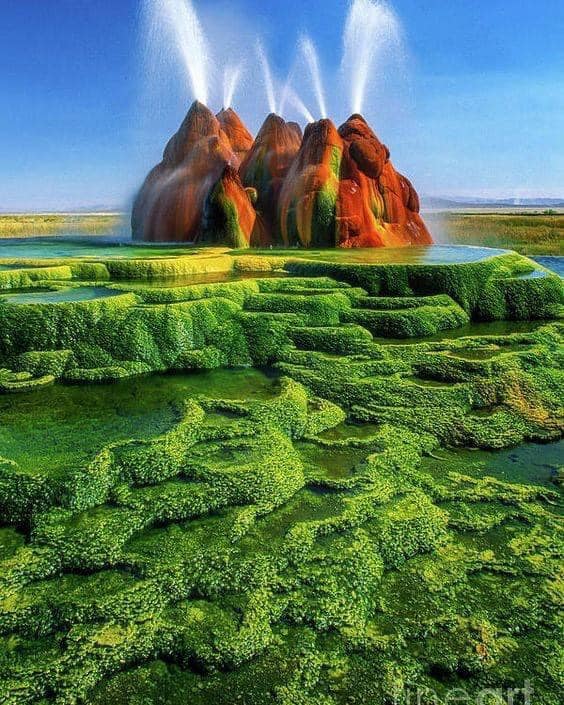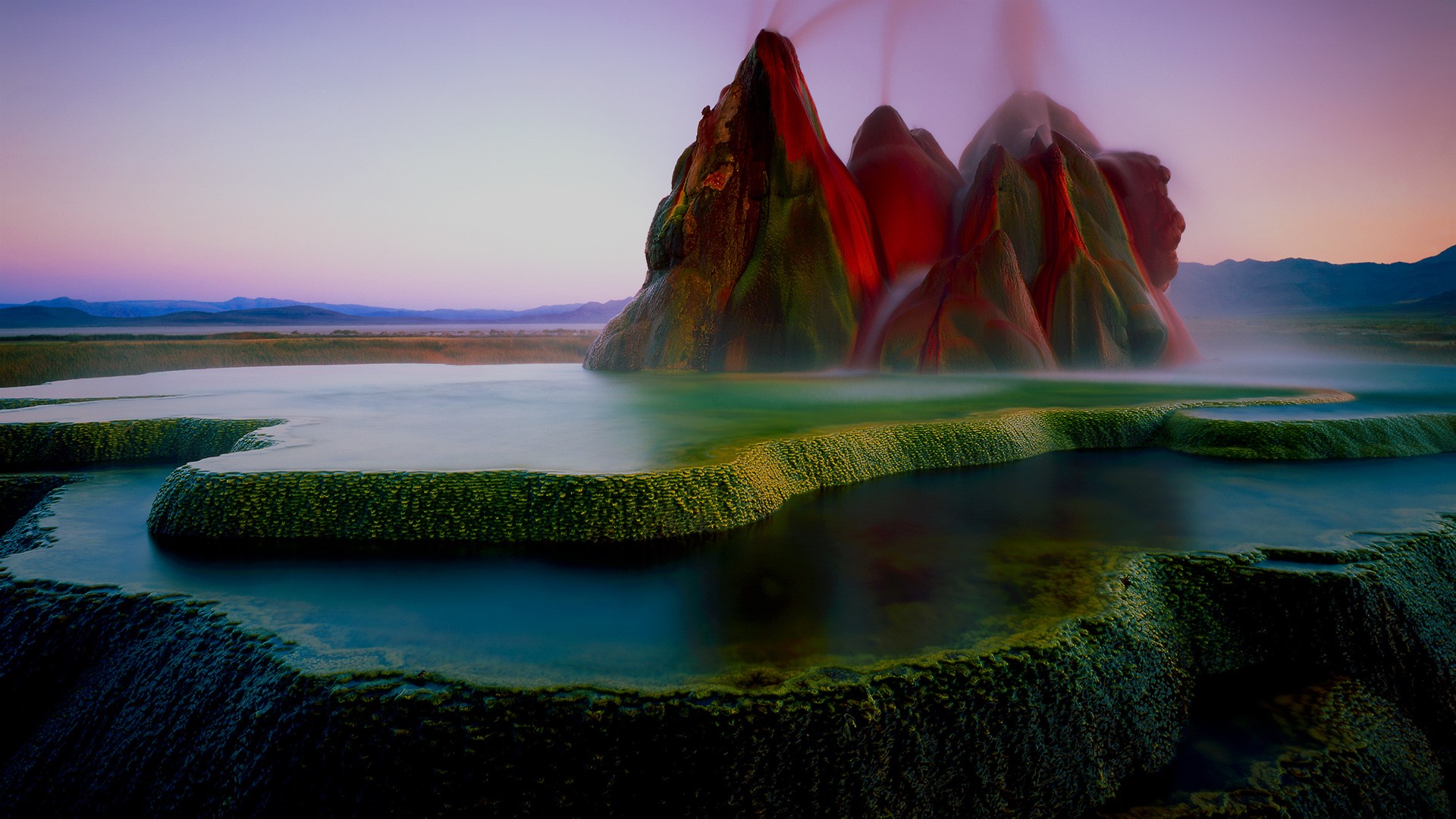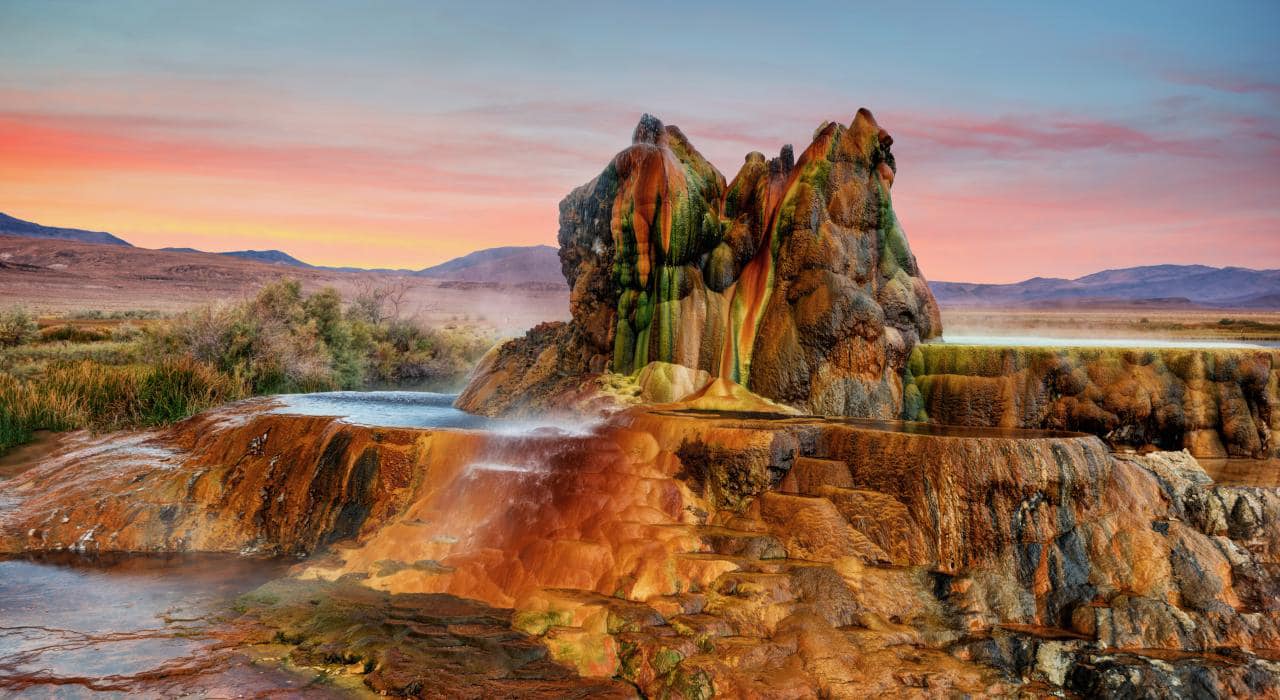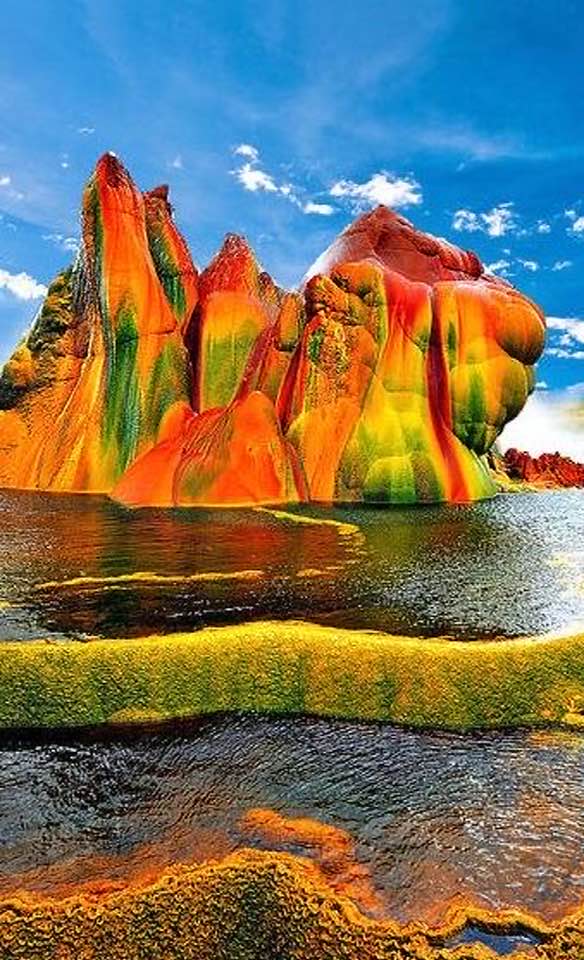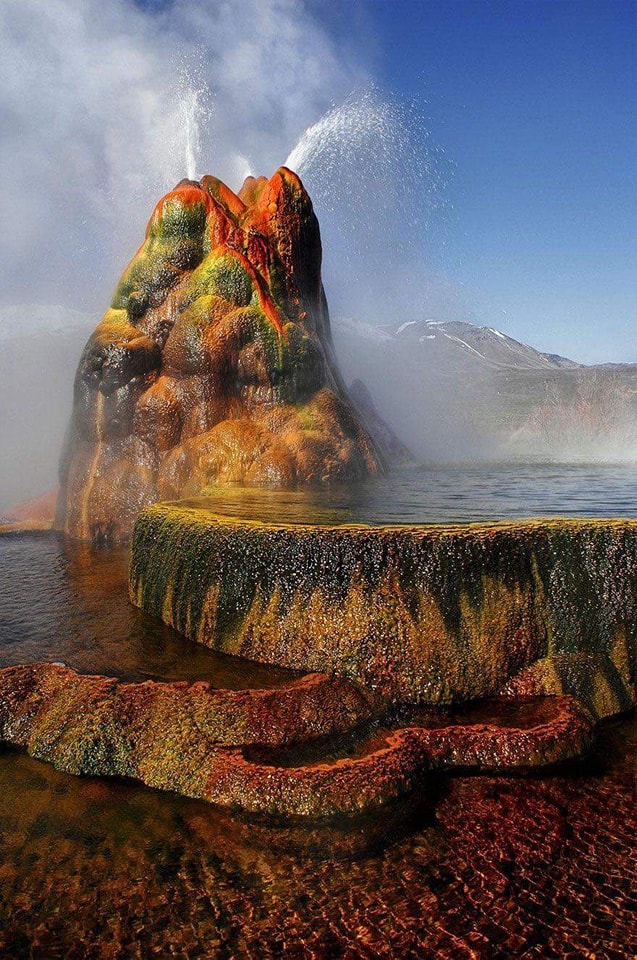Fly Geyser, also known as Fly Ranch Geyser,
is a small geothermal geyser located on private land in Washoe County, Nevada. The Fly geyser was accidentally created when,
in 1964, a geothermic energy company drilled a second well near the site of the first well in 1916 (the First Geyser was then formed).
Since the water was not hot enough and unsuitable for energy purposes, the well was re-sealed, but the cap failed. A new, more enormous geyser surfaced a few hundred feet north of the first geyser.
The Fly Geyser formed as dissolved minerals in the water accumulated around the new geyser,
creating the cones and around 30 – 40 travertine pools.
It has multiple cone-shaped openings measuring about 6 ft (1.8 m) high and 12 ft (3.7 m) wide, including the mound on which it sits. Water is constantly projected 5 ft (1.5 m) in the air.
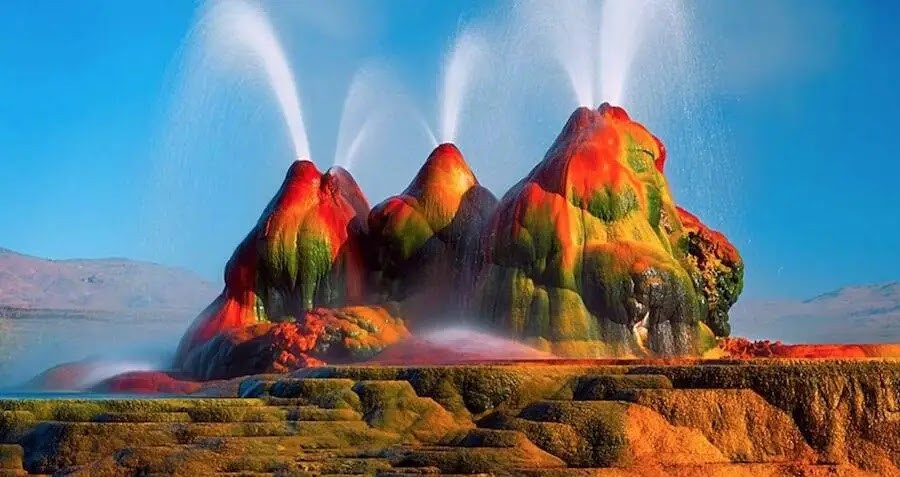
There are two geysers on the Fly Ranch property. The first was created nearly 100 years ago as part of an effort to make a part of the desert usable for farming.
A well was drilled, and geothermal boiling water (200 degrees) was hit.
Not suitable for irrigation water, this geyser was left alone, and a 10 to 12-foot calcium carbonate cone formed.
Also known as Fly Ranch Geyser is a small geothermal geyser located on private land in Washoe County, Nevada, about 20 miles (32 km) north of Gerlach.
Fly Geyser is an artificial geyser in Nevada’s Black Rock Desert that shoots hot water 12 feet into the air, creating shallow pools that support life.
The geyser is located in the Hualapai Geothermal Flats, near Fly Reservoir, and is 5 feet high and 12 feet wide. The geyser’s mound is covered in mineral deposits and thermophilic algae, which gives it its multi-coloured appearance with red and green hues.
The geyser’s inside also contains quartz, which grows much faster than in other geysers.
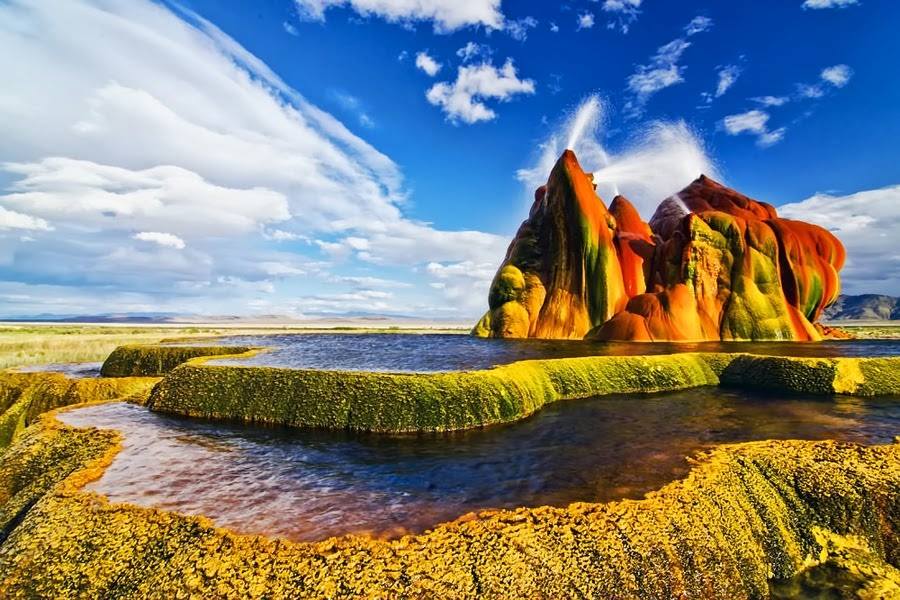
With rock formations that appear to have been created on a computer,
Fly Geyser is a mountainous formation that appeared in 1916 during well drilling. 1960, this volcano erupted, spewing water full of dissolved minerals and bacteria.
It is located on a 3,800-acre plot of land known as Fly Ranch, about two hours north of Reno.
In 1916, the owners of Fly Ranch—then Ward’s Hot Springs—wanted to irrigate their 3,800-acre parcel of desert. When drilled deep, they found plenty of water, but it was too hot for agricultural use
. Mineral-rich water started spewing out of this spot at around 200ºF,

eventually calcifying into a desert sprinkler nearly 12 feet tall.
Then, in 1964, a geothermal power company drilled a few hundred yards away from this first site,
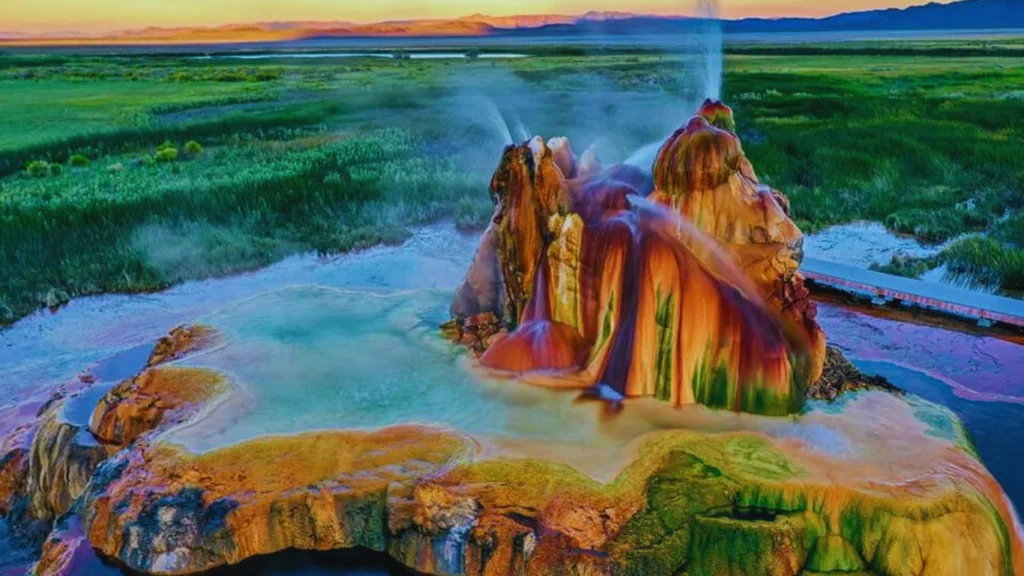
and what they found wasn’t hot enough for their needs, so they capped their well and left.
The cap failed quickly, dried up the first site, and today’s Fly Geyser was born. But note: It’s not a geyser.
Preserving Fly Geyser’s natural beauty is paramount to conservationists. Measures are in place to safeguard the surrounding ecosystem from human interference and ensure responsible tourism practices. By raising awareness of its ecological importance, efforts are underway to protect Fly Geyser for future generations to appreciate.
Its vibrant colours and ethereal beauty have inspired artists and storytellers, weaving its mystique into cultural folklore. Today, the geyser serves as a symbol of natural wonder and a source of artistic inspiration for visitors and locals alike.

